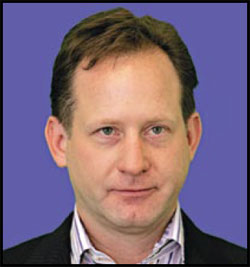|
May 2009 | Volume 12 / Number 5
Open Source
Talking with Jim Messer, CEO of TransverseBy: Richard “Zippy” Grigonis
Transverse (www.gotransverse.com), founded in 2007, has brought open source to the world of Billing Support Systems (BSS) and Operational Support Systems (OSS). Their Business Logic Execution Environment, or blee(p) is a fully integrated set of business management services that are grouped into business domain structures that can be easily extended via a plug-in framework, which allows a limitless number of business solutions to be assembled in days, not weeks or months. Transverse offers their solution via an open source GPL license, which carries no license fees. Users wanting advanced functionality, professional support, documentation, training and product extensions, can contact Transverse when they are ready for a commercial relationship. Yours Truly recently spoke with Transverse CEO Jim Messer. JM: Transverse was founded when some BSS and OSS veterans got together and agreed that this industry was heading for a ‘technology refresh,’ given that we really haven’t had one since the mid-1990s when client/server architectures first appeared. You can argue IPDRs [IP Detail Records] spurred a bit of a refresh around 2000, but for the most part there wasn’t any real innovation taking place – a little bit on the Web Services side, and that was about it. The majority of the billing/customer care BSS platforms out there relied on technology 2 generations old. So we formed Transverse and embarked on our own initiative, developed with SOA [Service Oriented Architecture], Web Services and Java, and completely built – most importantly – on an open source foundation. Open source is not just an interesting space but a logical one toward which we believe the industry is evolving. We launched Transverse in Stealth mode, created by a group of who we felt were the best architects in the BSS industry – that had worked at places like LHS, OpenWave and Intec (News - Alert). We wanted to ensure that the Total Cost of Ownership [TCO] was reflective of a model that operators could support and be agile in response to the marketplace, particularly regarding the advent of Web 2.0 offerings where business plans may change on the fly. They might not always succeed, but that’s acceptable in the space as long as the failure occurs quickly and the operator has the ability to grab onto another business model that makes them more competitive. That wasn’t possible in the current BSS infrastructure – indeed, it was implausible without an operator changing its fundamental architecture. In terms of being able to take these risks with new business models, it really boils down to two things: The cost of being agile in the marketplace, and the time associated with that. We focused on those. We found you really couldn’t handle the cost or technology aspects without doing things on an open source foundation. And the TCO then really becomes compelling when going to the marketplace. RG: Did you guys start from scratch? JM: No, we examined best-of-breed open source projects such as well-established CRM/contact center packages such as Asterisk (News - Alert), business intelligence packages such as Pentaho, MySQL for the database, and so forth, where there was a very large R&D investment, on which we could capitalize without having to start that effort completely on our own. We take those best-of-breed open source projects and overlay our own open source and domain expertise to optimize them for telecom environments. When we go to market with such a reduced total cost of development for ourselves and TCO for our clients, it’s quite difficult for legacy providers to compete with this business model. They could drop their prices to zero, but they can’t change their cost model without fundamentally re-architecting their systems, because their business models, professional services and change management are allied right now with their proprietary platforms and so everything heavily depends on their existing codebase. You have to get away from vendor ‘lock-in’. Leading vendors don’t provide source code, so there’s no transparency and no way to check on the quality of the code with the exception of acceptance tests and ongoing operations. Their contracting model typically voids your warranty for code support if you try to go around them. So you’re trapped. We say, let’s bring transparency to the marketplace and see how open source is of significant benefit to end users in the enterprise application space. Where market acceptance has brought open source in, at the end of the day the prices have dropped, and the technology has expanded in a positive direction. It’s not a question of ‘if’ but ‘when’ the carrier community embraces open source. At that point, I think you’ll see not only their existing vendors dropping their prices, but a fundamental re-vamping of carriers, just as the enterprise has been affected by open source software. IT Richard “Zippy” Grigonis is Executive Editor of TMC (News - Alert)’s IP Communications Group. Today @ TMC
Headlines
Upcoming Events
MSPWorld
The World's Premier Managed Services and Cloud Computing Event Click for Dates and Locations Corporate News
|
|






